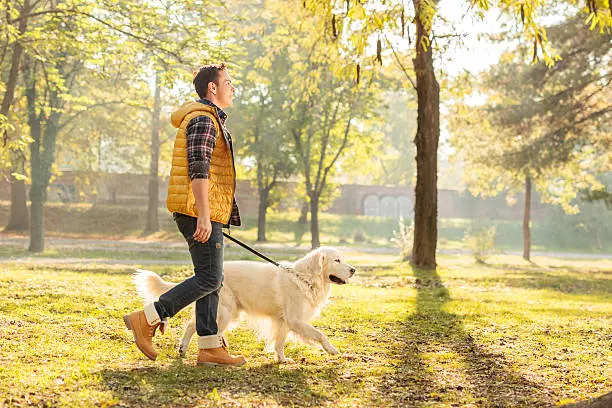Nestled in the vibrant South Side of Chicago, Fuller Park is a historic and community-centric space that offers a glimpse into the city’s rich cultural tapestry. This article explores the park’s location, history, amenities, and its significance within the community, providing an insightful perspective for those looking to discover this unique area.
Location and Accessibility
Fuller Park is situated at 331 W. 45th Street, within the community area of the same name. It lies approximately 5 miles south of the Loop, Chicago’s bustling downtown district. The park is bordered by several key thoroughfares:
North: Pershing Road
South: Garfield Boulevard
East: The Dan Ryan Expressway and the Rock Island District commuter rail line
West: The Chicago & Western Indiana Railroad
This strategic location makes Fuller Park easily accessible for both residents and visitors. The nearby Dan Ryan Expressway provides quick access to other parts of the city, while public transportation options abound, making it convenient for those relying on buses or trains.
Historical Context
Fuller Park was established as part of a broader initiative by the South Park Commission in the early 20th century to create green spaces in densely populated neighborhoods lacking recreational areas. The park officially opened in 1912, although its development began in 1910 after some disputes regarding its location. Named after Melville Weston Fuller, who served as Chief Justice of the United States from 1888 to 1910, the park reflects a commitment to providing recreational opportunities for all citizens.
The area surrounding Fuller Park has a rich history, primarily settled by Irish immigrants in the late 19th century. The establishment of the Union Stock Yards in 1865 significantly influenced local demographics and economic activities. Over time, as various immigrant groups settled in the area, including Germans, Austrians, and later African Americans and Mexicans, Fuller Park evolved into a diverse community.
Architectural Significance
Designed by D.H. Burnham & Company, Fuller Park features a Beaux-Arts style fieldhouse that stands as a testament to early 20th-century architectural trends. The park’s design mirrors that of other parks developed by the South Park Commission, which were heavily influenced by the Olmsted Brothers’ landscaping principles.
The park originally included various facilities such as:
A gymnasium
A bathhouse
A grandstand for spectators
Running tracks and walking paths
These amenities were designed to promote physical fitness and community engagement among residents.
Community Impact
Today, Fuller Park serves as an essential hub for local residents. Despite facing challenges over the decades—including significant population decline and economic hardships—the park remains a focal point for community activities and gatherings.
Current Amenities
Fuller Park offers several amenities that cater to various interests:
Sports Facilities: The park includes baseball diamonds, basketball courts, and soccer fields that are frequently used by local leagues and schools.
Playgrounds: Family-friendly playgrounds provide safe spaces for children to play.
Community Programs: Various programs are organized through the Fuller Park fieldhouse, including fitness classes, youth sports leagues, and cultural events.
Eden Place Nature Center
One notable feature within Fuller Park is the Eden Place Nature Center, established in 2003. This center focuses on environmental education and urban ecology, transforming previously blighted land into a thriving educational resource. It has garnered recognition for its efforts to engage local youth with nature and sustainability practices.
Challenges Faced by Fuller Park
Despite its rich history and potential, Fuller Park has faced numerous challenges over the years:
Population Decline: From a peak population of around 17,000 in 1950 to fewer than 3,000 by 2010 represents an alarming trend of decline.
Economic Hardship: The area has consistently reported high unemployment rates and limited access to resources compared to other neighborhoods.
Infrastructure Issues: Many homes lack basic amenities like indoor plumbing, reflecting broader systemic issues affecting low-income neighborhoods.
See Also: Where is Hyde Park in Chicago
Revitalization Efforts
In recent years, various community organizations have worked tirelessly to revitalize Fuller Park. Initiatives aimed at improving housing conditions, increasing access to education and employment opportunities, and enhancing public safety are underway.
Local activists have also focused on promoting environmental awareness through programs at Eden Place Nature Center. These efforts aim not only to improve quality of life but also to foster a sense of pride among residents.
Cultural Significance
Fuller Park is not just a physical space; it embodies the spirit of resilience within its community. The park hosts numerous cultural events throughout the year that celebrate local heritage:
Community Festivals: These events often feature food vendors, live music performances, and activities for children.
Educational Workshops: Local organizations frequently conduct workshops aimed at teaching skills ranging from gardening to financial literacy.
These gatherings serve as vital opportunities for residents to connect with one another while fostering a sense of belonging.
Conclusion
In summary, Fuller Park stands as a testament to Chicago’s commitment to creating inclusive public spaces that serve diverse communities. Its location in South Side Chicago makes it an accessible destination for residents and visitors alike who wish to explore its historical significance and engage with ongoing community efforts.
As urban revitalization continues to unfold across Chicago’s neighborhoods, Fuller Park remains a beacon of hope—a place where history meets progress and where community spirit thrives amidst challenges. Whether you’re looking for recreational activities or simply wish to enjoy a peaceful day outdoors, Fuller Park offers something for everyone. By understanding where Fuller Park is located—both geographically and historically—you can appreciate not just its beauty but also its role as a cornerstone of community life in one of Chicago’s most dynamic areas.
Related Topics:
How to Go to Oxford University from London
Where Is Roscoe Village in Chicago
Where is Logan Square Located in Chicago

